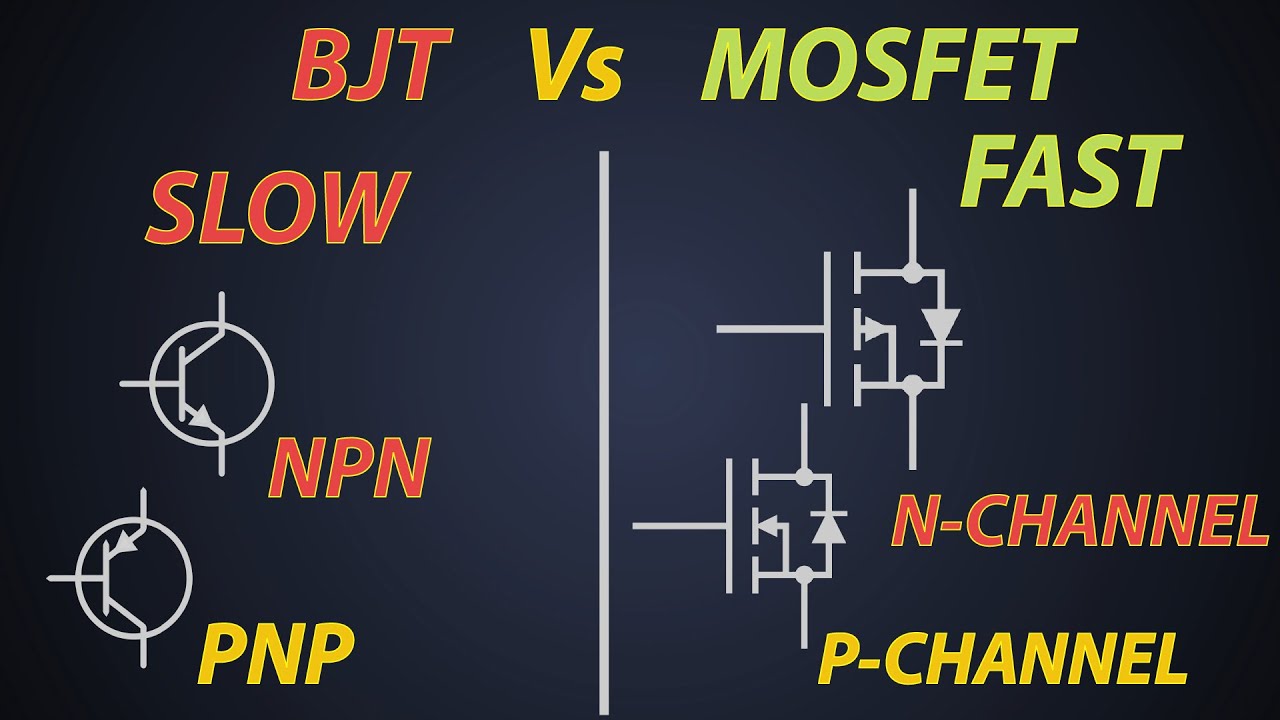Well, you see, there’s this thing called MOSFET and BJT, both of ’em work in circuits, but they’re a bit different, y’know? Now, MOSFET stands for Metal-Oxide-Semiconductor Field-Effect Transistor, and BJT stands for Bipolar Junction Transistor. They’re both used to control the flow of electricity, but how they do it is a bit different. You gotta know these things, especially if you’re messing around with electronics.

First off, the biggest difference is how they’re controlled. Now, BJT, it’s a current-controlled device. That means you gotta push a little current through its base to get it to do what you want, like turning the flow of current on or off. MOSFET, on the other hand, is a voltage-controlled device. You don’t need much current to make it work, just a little voltage to control the flow of electricity. So, if you’re building something where you want to save energy, MOSFET might be your best friend, ’cause it uses less power than a BJT does.
Now, don’t get me wrong, both of ’em have their uses. MOSFETs are great for circuits that need to work fast, like in high-frequency stuff, ’cause they switch on and off real quick. If you’re working with something that needs speed, MOSFETs are the way to go. Plus, they don’t make as much heat as BJTs do. And we all know, less heat means less problems down the road, right? So, for low-voltage, high-speed applications, MOSFETs are like your go-to tool.
On the other hand, BJTs, they’re good when you need to amplify a signal. They’re used more for current amplification, not so much for switching high-speed things. But when you need to make something stronger, like boost a signal, BJTs will get you there. They can handle bigger currents, but they also need more power, and they make more heat than a MOSFET would. So, if you’re designing something that’s energy-conscious, and don’t want all that heat, you might wanna stick with MOSFET.
And there’s something else, these two don’t always play well together. They’re different in how they operate and what they need to function right. You might see both in the same system sometimes, but usually, you’ll find one being better suited for a certain job than the other. A lot of the time, when you see something that’s made to work with MOSFETs, it’s for low-voltage, high-frequency stuff. And BJTs are usually found in circuits where they need to drive larger currents or amplify signals. It’s like using the right tool for the right job, you wouldn’t use a hammer to screw in a nail, right?
One more thing to keep in mind, is how the switching works. MOSFETs can switch faster than BJTs, which is important when you’re dealing with high-frequency or fast circuits. But BJTs, they’re better at handling larger currents over a longer time. So if you’re working with big power stuff, BJT might still have its place.

Key Differences Between MOSFET and BJT:
- Control Mechanism: BJT is current-controlled, while MOSFET is voltage-controlled.
- Power Consumption: MOSFETs use less power and generate less heat compared to BJTs.
- Speed: MOSFETs are faster at switching than BJTs.
- Applications: MOSFETs are used for high-frequency, low-voltage applications, while BJTs are used for current amplification.
Now, let me tell ya, there’s also these other things like IGBTs, which are like a combination of MOSFETs and BJTs. They can handle higher voltages and more power, so they’re used in bigger systems, like in motor drives or power supplies. But for regular, everyday stuff, you’ll probably end up choosing between a MOSFET and a BJT depending on what you’re trying to do. If speed and low power are your thing, go with MOSFET. If you need to push a lot of current and make something stronger, a BJT might be better for you.
So, when you’re designing your circuit or project, always think about what kind of current or power you’re dealing with, how fast you need the thing to switch, and how much heat you’re willing to deal with. MOSFETs and BJTs are both important, but they each have their strengths and weaknesses. And that’s the thing, knowing which one to use can save you a whole lot of trouble down the road. Now, go ahead and build something, and make sure you got the right tool for the job!
Tags:[BJT and MOSFET, BJT Mosfet Difference, Bipolar Junction Transistor, MOSFET Advantages, Current Control, Voltage Control, Semiconductor Devices, Electronics Comparison]

